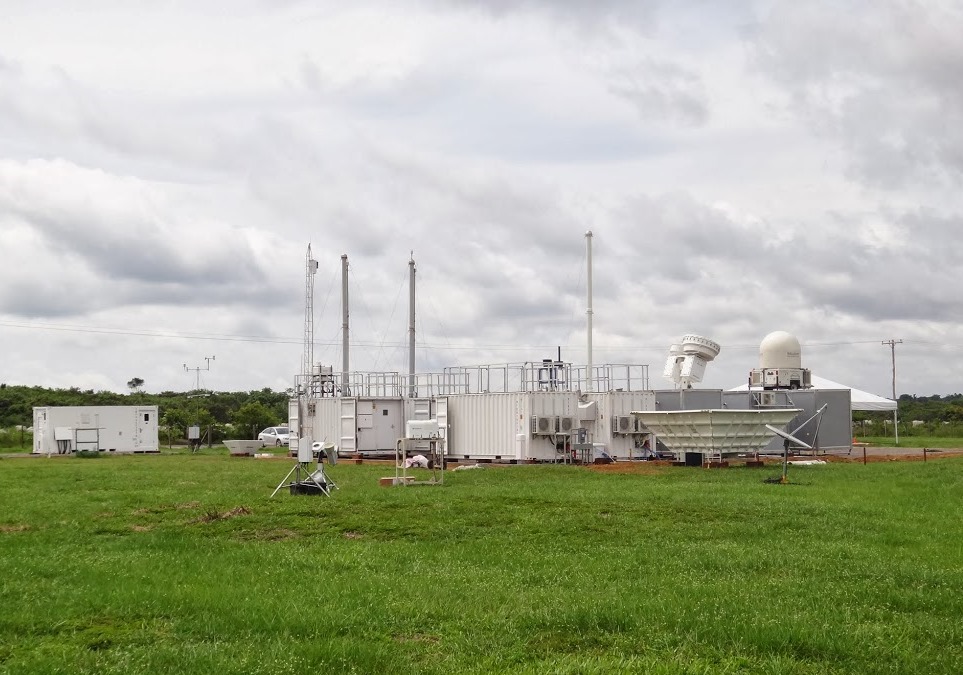
The Atmospheric System Research (ASR) Program, within the DOE Office of Science, has recommended funding 24 proposals submitted to university funding announcements DE-FOA-0001430 and DE-FOA-0001431.
Those projects submitted to DE-FOA-0001430 will focus on improvements to the understanding and model representation of the boundary-layer cloud or mixed-phase cloud processes, ice cloud processes, aerosol life cycle processes, and convective processes using results from the Atmospheric Radiation Measurement (ARM) Midlatitude Continental Convective Clouds Experiment (MC3E), ARM Madden-Julian Oscillation (MJO) Investigation Experiment (AMIE), and/or Green Ocean Amazon (GoAmazon 2014/15) campaigns.
New to FY16 was a call, DE-FOA-0001431, specifically to develop new proof-of-concept data products from ARM site instruments.
The ASR program reviewed 26 single and collaborative applications to the data products call and 101 to the research call.
“We want to thank the 79 members of the scientific community who contributed their time and expertise to the peer review process through participation in one or more of the five review panels and/or by submitting mail-in reviews,” said ASR Program Managers Ashley Williamson and Shaima Nasiri.
ASR awardees receive funding from the Office of Biological and Environmental Research (BER), which focuses on understanding complex biological, climatic, and environmental systems for a secure and sustainable future.
After FY16 funding awards are finalized, principal investigators, titles, abstracts, and team members will be added to the ASR projects web page. See the following list of principal investigators and titles of the 24 recommended projects.
Data Products
- Jessica Kleiss and Evgueni Kassianov: Macro-physical Properties of Shallow Cumulus from Integrated ARM Observations
- Sonia Kreidenweis: A Multi-Instrument Cloud Condensation Nuclei Spectrum Product
- Derek Posselt: Bayesian Cloud Property Retrievals from ARM Active and Passive Measurements
- Norman Wood: Data Product Development for Cold Cloud and Precipitation Process Analyses
- Minghua Zhang: Developing High-Resolution Constrained Variational Analysis of Vertical Velocity and Advective Tendencies within the Range of ARM Scanning Radars at the SGP
Research
- Elisabeth Andrews: Evaluation and Improvement of the Parameterization of Aerosol Hygroscopicity in Global Climate Models Using In-Site Surface Measurements
- Delphine Farmer: Observational Constraints on Wet and Dry Deposition of Black Carbon to Land Surfaces
- Graham Feingold: Quantifying the Aerosol-Cloud Radiative Effect through Large Eddy Simulation and Ground-Based Observations at Southern Great Plains
- Richard Ferrare: Characterizing the Vertical Distribution of Aerosols using Multiwavelength Lidar Data.
- Ann Fridlind: Multi-Scale Observational Analysis and Modeling to Improve GCM Simulation of Global Shallow Cloud Processes and Feedbacks
- Timothy Garrett: Parameterization of Arctic Hydrometeor Physics using new Precipitation Measurement Technologies
- Jose Jimenez-Palacios: Understanding the Applicability of Gas/Particle Partitioning Theory to SOA using Novel Chemically-Speciated Partitioning Measurements
- Daehyun Kim: Diagnosis of Convective Organization and Cold Pools Using ARM Data Sets and Evaluation of a Unified Convection Parameterization (UNICON)
- Daniel Knopf: Experimental Investigation of the Governing Parameters of Atmospheric Ice Nucleation Using Field-Collected and Laboratory Generated Aerosol Particles and its Application in Cloud Resolving Models
- Sasha Madronich: Three-dimensional Modeling of the Explicit Chemistry of Organic Aerosols: Formation, Removal, and Comparison with Observations
- Roger Marchand: An Investigation on the Spatial Dependence of Autoconversion and Accretion in Eastern North Atlantic Boundary Layer Clouds
- David Mechem: Scrutinizing Entrainment and Mass Flux Closures in Shallow Cumulus Parameterizations Using Cloud-Radar Observations and Large-Eddy Simulation
- Hugh Morrison: Developing and Testing a Novel Stochastic Ice Microphysics Parameterization for Cloud and Climate Models Using ARM Field Campaign Data
- Catherine Naud: Characterization of Oceanic Post-Cold Frontal Clouds and their Model Representation
- Courtney Schumacher: Convective-Environmental Interactions in the Tropics
- Yolande Serra: Shallow-to-Deep Convective Transition in the Amazon
- Kara Sulia: Investigating the Evolution of Ice Particle Distributions in Mixed-Phase Clouds
- Marcus van Lier-Walqui: Synthesis of Observed and Simulated Rain Microphysics to Inform a new Bayesian Statistical Framework for Microphysical Parameterization in Climate Models
- Guang Zhang: Evaluating and Improving Convective Parameterization for GCMs Using ARM Observations
This work was supported by the U.S. Department of Energy’s Office of Science, through the Biological and Environmental Research program as part of the Atmospheric System Research program.

